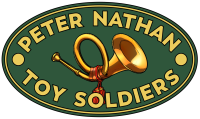19th Nov 2024
John Jenkins Designs: Battle of Gingindhlovu, The Naval Brigade
Naval Brigade landing parties were a feature of Victorian campaigns and the Zulu War was no exception.
In the aftermath of Isandlwana HMS Shah was diverted from a homeward journey and landed most of its ship’s complement at Durban, a total of 378 men.
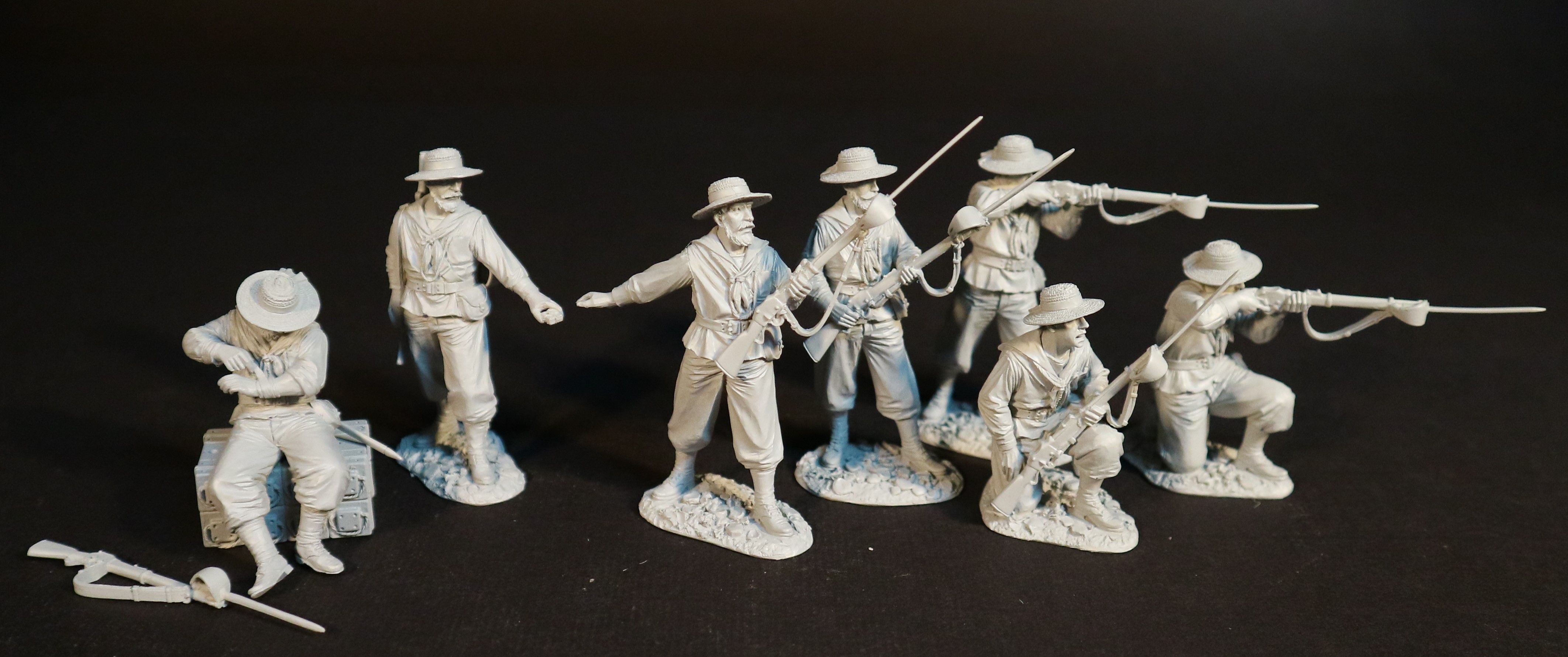
On 20th March HMS Boadicea also landed a brigade of 10 officers and 218 men.
About 100 Royal Marines were also included.
Two Brigades were formed for the relief column for Eshowe. The artillery for this force came entirely from the Naval Brigades. The allocation was as follows
1st Brigade, included two 9pdrs, two 24pdr Rocket Tubes, and one Gatling gun.
2nd Brigade, included two 24pdr Rocket Tubes and one Gatling Gun.
The 9pdrs, Rockets and Gatlings were positioned at the corners of the British enclosure. The Gatling Guns opened fire at 1,000m, and as the Zulus approached they were engaged by all the artillery weapons.
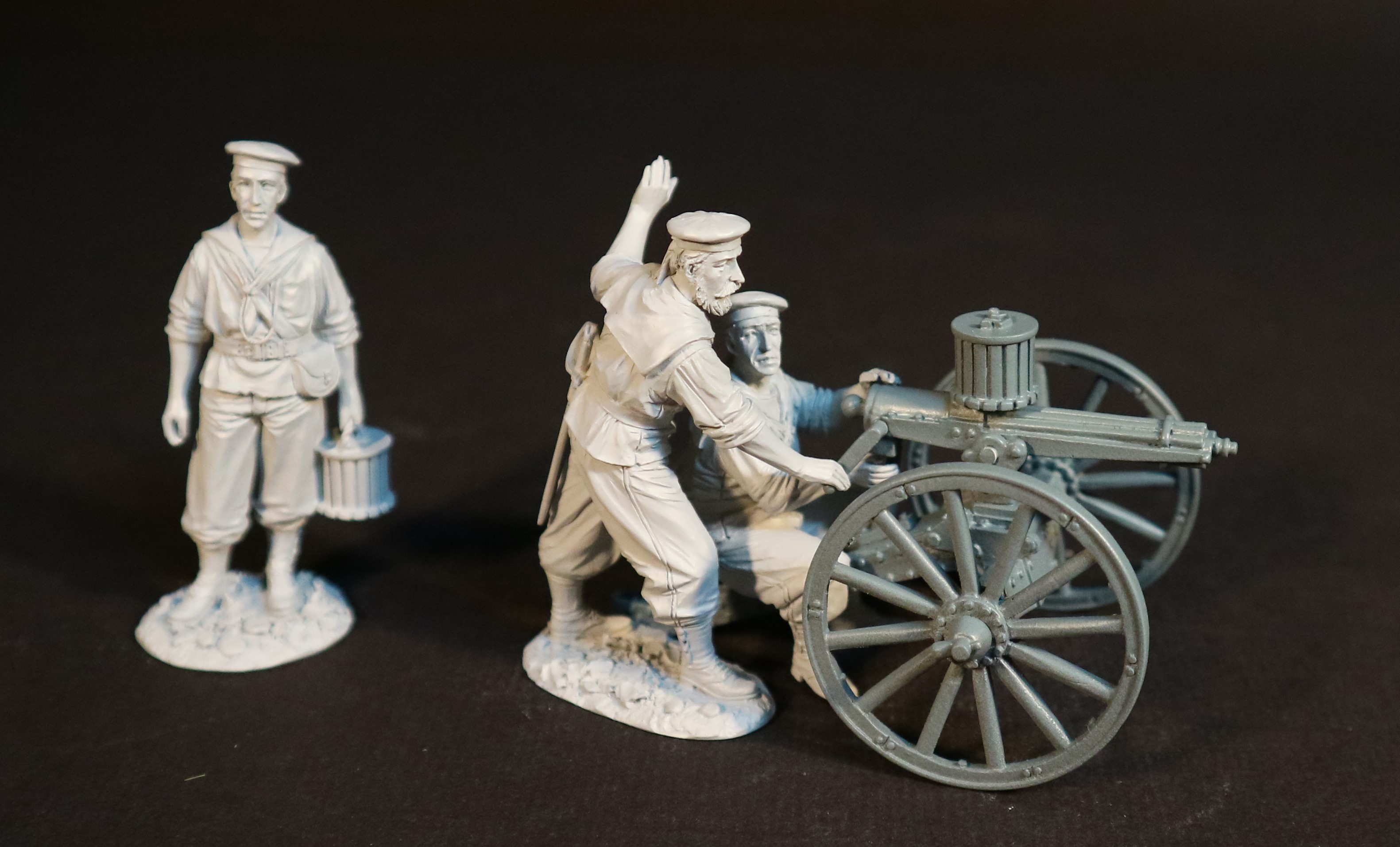
Naval attachments brought with them their own artillery, including Gatlings which were both used to good effect at Gingindhlovu.
The Naval Brigade Gatlings were apparently mounted on different carriages to their army counterparts, these being narrower and minus the axle-tree boxes.
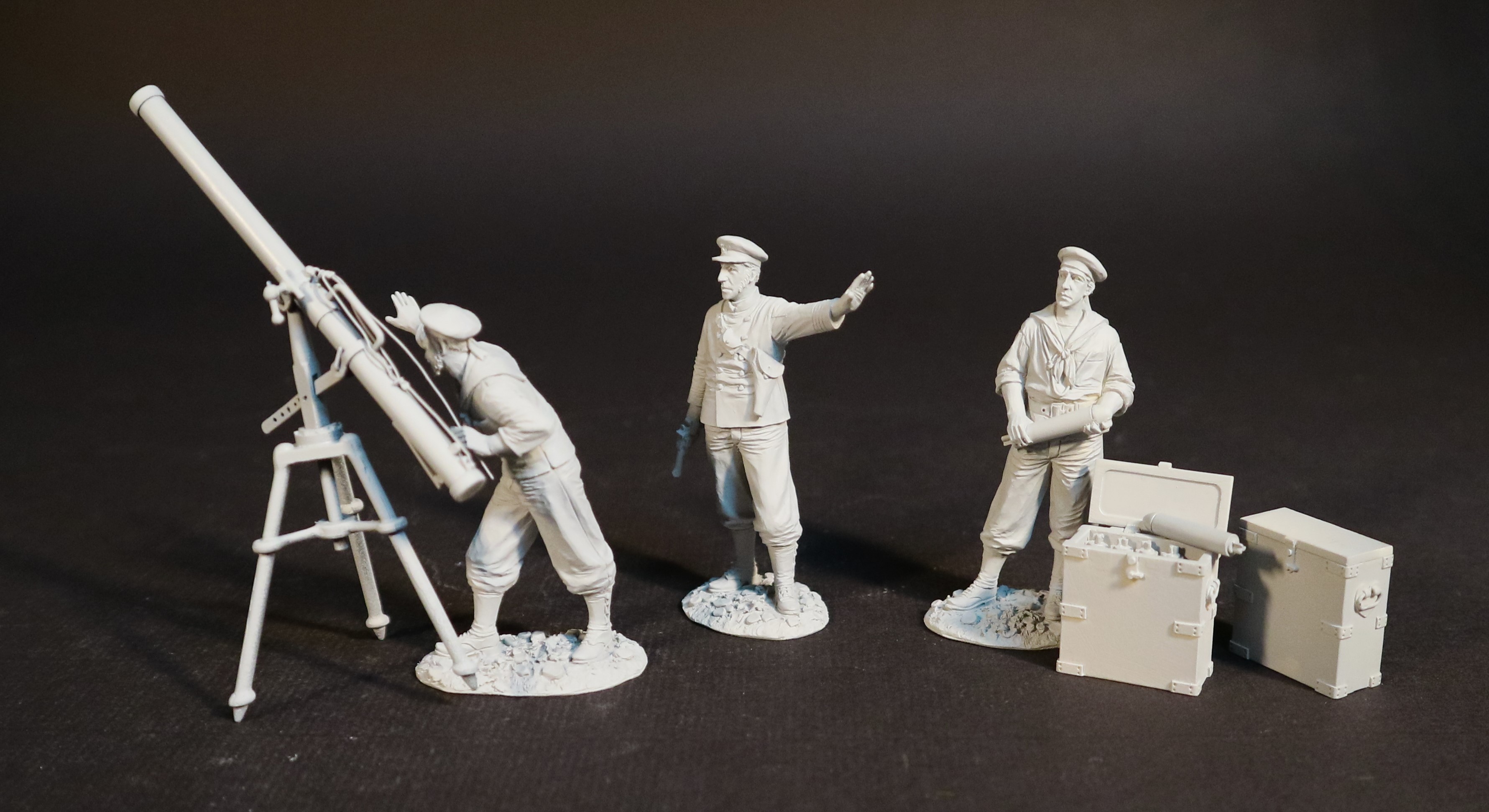
There were also a number of Hale’s rockets. These were the heavy 24pdrs, fired from tubes rather than the army’s troughs. These tubes were originally designed to be bracketed onto the side of a ship, but by 1879 a modified version replaced the bracket with a tripod for land service, and it was this “Fisher” tube which was the type used in Zululand.
The navy also landed some of its field guns. At Gingindhlovu the naval Brigade had two 9-pounder guns.
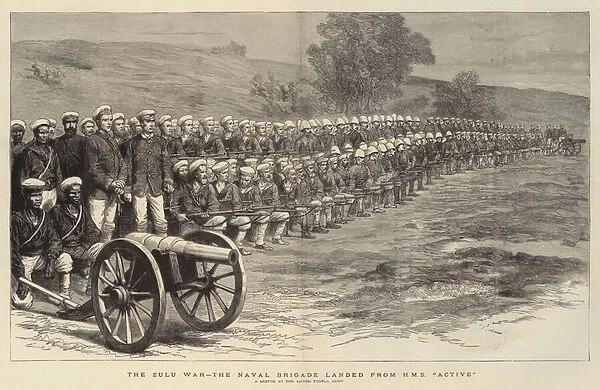
A drawing of the relief column, shows the Naval Brigade with a 9pdr which does not appear to be of the standard Army pattern. At this time there was a great deal of experiments carried out on artillery pieces, and it is possible that the Navy were given some of these “experimental” guns for their landing parties. It was a time of change in Britain’s artillery.
Since no plans or other drawings exist of these experimental guns, I have decided to produce the standard Royal Artillery 9 pdr.
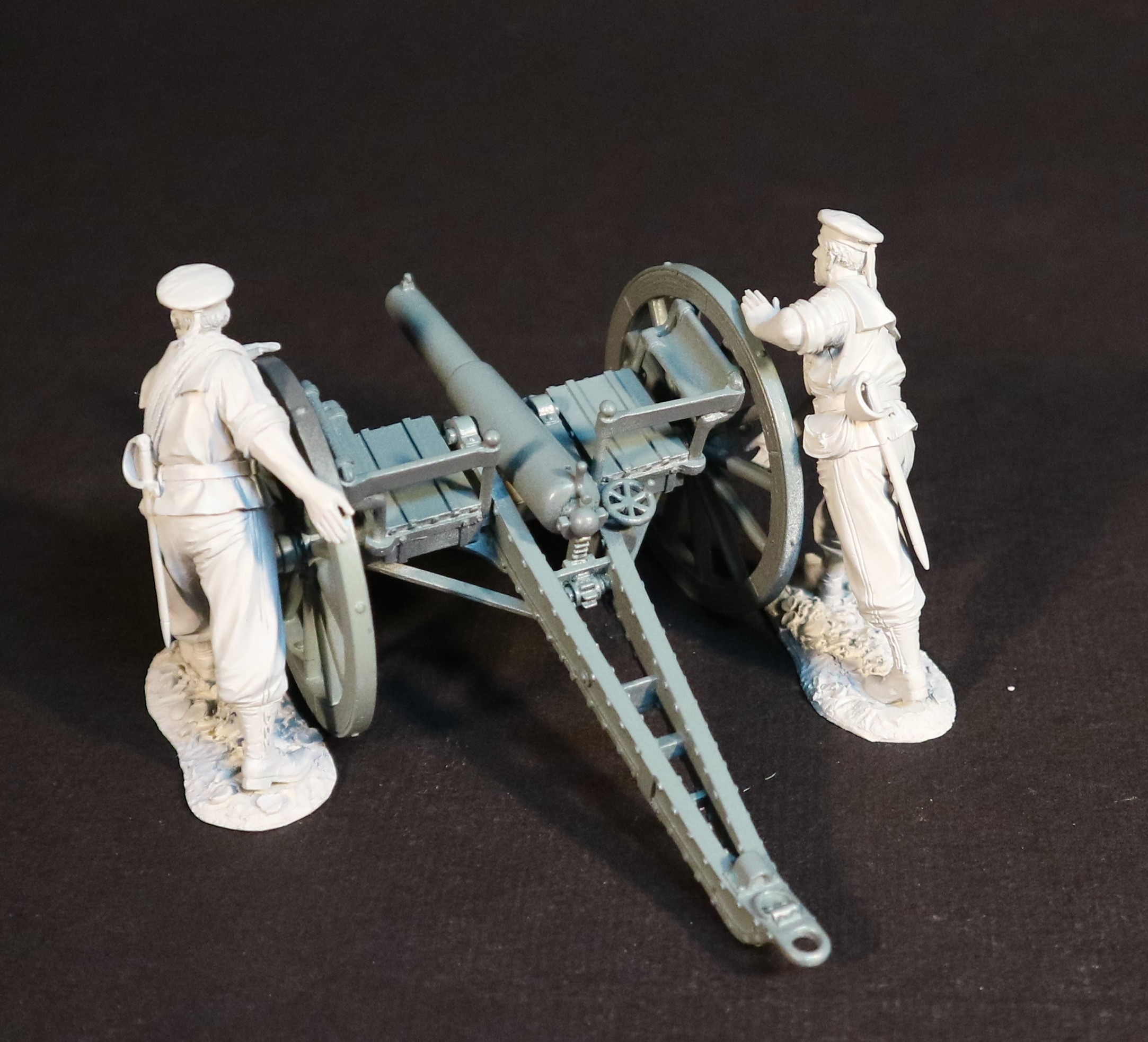
THE ROYAL MARINES
The Marines were engaged at Gingindhlovu and Inyezane, had one officer and 80 men present at the siege of Eshowe, and formed part of the naval brigade which helped relieve the town.
During the second invasion of Zululand the Marines were attached to Crealock’s 1st Division.
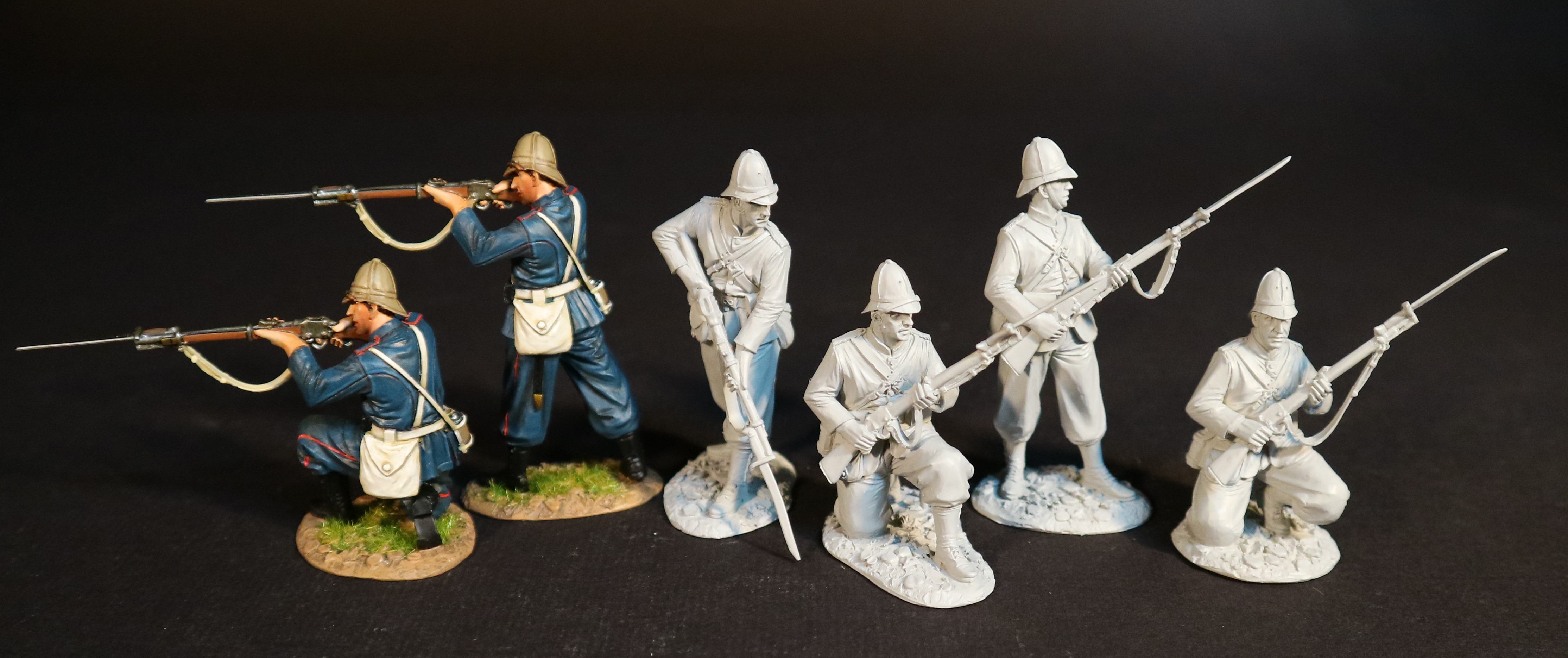
The Royal Marine infantry wore a dark blue working jacket on active service in Zululand, with valise equipment with black ammunition pouches.
